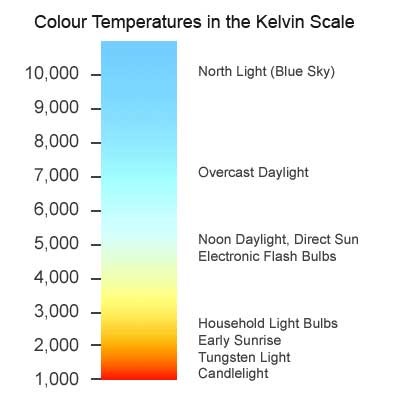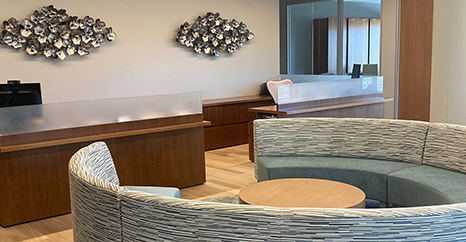Lighting affects us at any age and most of us do not know how to establish an atmosphere that will positively impact our health, sleeping habits and general wellbeing. Most people live and work in the same intensity of light. Using the Kelvin Scale that translates to 4,000 light temperature in degrees. This disturbs our circadian rhythms. Add in the digital devices that have become ingrained in our daily lives and we are forcing Blue-Violet light into our lives from morning until night, from the extreme end of the spectrum, which is the most intense variety visible to the human eyes. Macular degeneration is on the rise, no wonder our Cortisol and Melatonin levels are out of whack too!
How to understand the Kelvin Scale
Kelvin is a unit of measurement used to describe the hue of a specific light source. This is not necessarily related to the heat output of the light source but rather the color of the light output.
The higher the Kelvin value of the light source, the closer the light’s color output will be to actual sunlight.
- Bulbs with an output of 3500K or lower on the scale will have an amber hue.
- Bulbs in the mid-range of 3500K-4100K will have a white hue.
- Bulbs in the higher 4200K+ range will tend to have more of a blue hue closer to, or exceeding, that of sunlight.
Lighting creates ambiance and subliminally tells our bodies what to feel and when to feel it. The older we get the harder it becomes to control these trends, especially when you are living outside of your home in a Life Plan Community for active adults or an assisted living community or nursing home.
There are things that can be done to help the residents of these communities and improve their wellbeing.
- If building a new community, place windows high on the wall to minimize glare and maximize daylight’s filtration into the space.
- To balance brightness, avoid dark colors and highly reflective finishes.
- Layer lighting, adding fixtures to ceilings, walls and table tops, that you can dim or turn off or adjust at the beginning and end of the day. 2700 degrees Kelvin would create a warmer and more relaxed atmosphere during the overnight hours and in the morning and evenings, while adjusting the lighting to 4600 – 6500 degrees Kelvin during the middle of the day when you want your residents to engage.
- The more active daylight at the heart of the day would help increase Cortisol levels and the more amber light starting at dinnertime will inform your residents internal time clock that sleep is eminent and will message their Melatonin levels to relax.
Lighting, or lack thereof, can cause seasonal affective disorder and depression. Humans connection to light is hormonal. Small changes can be very impactful to the wellness of your residents. Start with analyzing your light bulbs and adding dimmer switches where appropriate. Lean on PARsolutions to create a meaningful plan that will benefit your residents and staff alike. Let’s get a conversation started!



